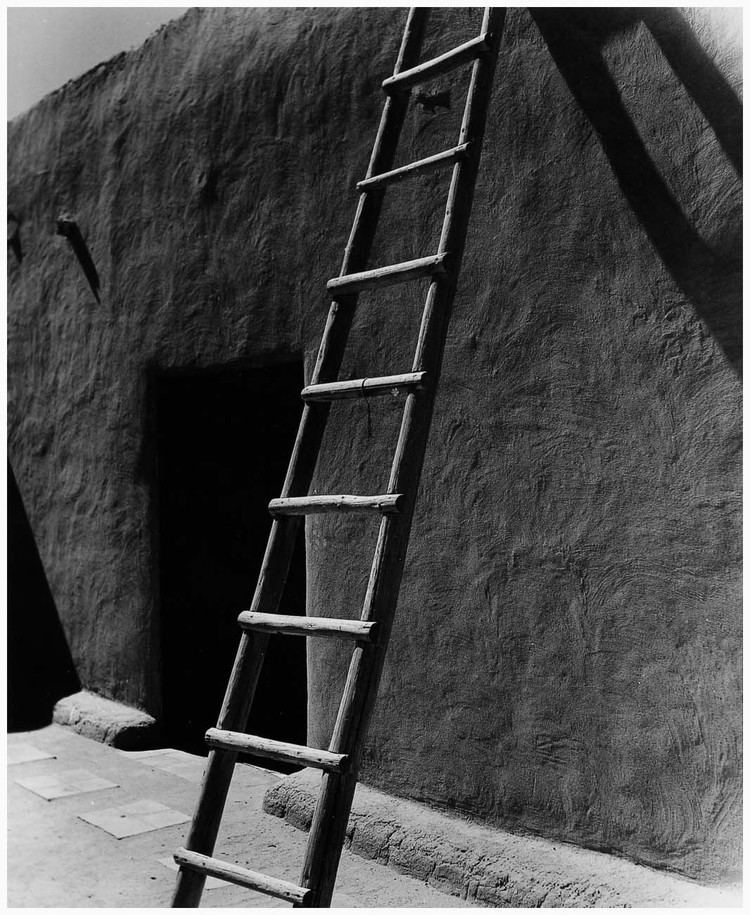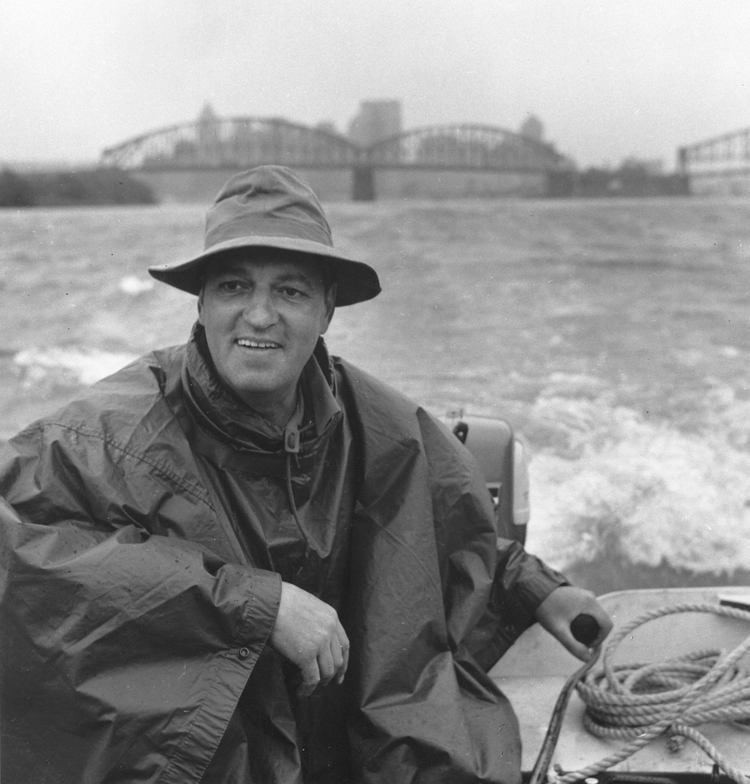Nationality American Role Photographer Name Todd Webb | Years active 1940–2000 Occupation Photographer Home town Detroit | |
 | ||
Born September 5, 1905 ( 1905-09-05 ) Detroit, Michigan, United States Education University of Toronto (1924–1925) Books Looking Back: Memoirs and Photographs Awards Guggenheim Fellowship for Creative Arts, US & Canada | ||
"Todd Webb's Post War II New York" at MCNY on "Arts in the City"
Todd Webb (September 5, 1905 – April 15, 2000) was an American photographer notable for documenting everyday life and architecture in cities such as New York City, Paris as well as from the American west. His photography has been compared with Harry Callahan, Berenice Abbott, Walker Evans, and the French photographer Eugène Atget. He traveled extensively during his long life and had important friendships with artists such as Georgia O'Keeffe, Ansel Adams and Harry Callahan. He photographed famous people including Dorothea Lange. His life was like his photos in the sense of being seemingly simple, straightforward, but revealing complexity and depth upon a closer examination. Capturing history, his pictures often transcend the boundary between photography and artistic expression.
Contents
- Todd Webbs Post War II New York at MCNY on Arts in the City
- July 2017 Arts in the City
- Early life
- Early career
- New York City years
- OKeeffe years
- Later years
- Legacy
- Publications
- References

July 2017 | Arts in the City
Early life

Webb was born in Detroit in 1905 and grew up there and in a Quaker community in Ontario. From 1924–1929 he worked as a bank teller and clerk at a brokerage firm in Detroit; in another account, he was a successful stockbroker during the 1920s but lost his earnings during the Crash before the Depression. During the Depression beginning in 1929, he moved to California and worked as a prospector and earned a meager living. During these years he also worked as a fire ranger for the United States Forestry Service. Webb reportedly wrote short stories which were unpublished. After 1934, Webb returned to Detroit and worked for the automobile manufacturer Chrysler in their export division. In 1937, he visited a friend in Panama in search of gold, but had little success. But in Panama, he brought along a camera donated by his former employer, Chrysler.
Early career

Webb returned to Detroit and studied at the Detroit Camera Club. He met photographer Harry Callahan. In 1940, he completed a ten‑day workshop with Ansel Adams as his teacher. In 1941, he visited Rocky Mountain State Park with Harry Callahan, and realized during this trip that he was drawn more to the urban cityscape, and although he found Adams to be an inspiration, he would not make photographs like his teacher. During World War II, Webb was a photographer for the United States Navy and was deployed to the South Pacific theater of operations.
New York City years

After World War II, in 1945, Webb moved to New York City and began his career as a professional photographer. He made key friendships with Alfred Stieglitz and Georgia O'Keeffe as well as Beaumont Newhall, Berenice Abbott, Helen Levitt, and Minor White. Webb began a remarkable project of walking the streets of New York City with his heavy camera and tripod and photographing people and buildings he encountered. What set these photos apart was their "straightforward, descriptive clarity" even though they were often of familiar views. One large 10–foot–long panorama photograph which was critically acclaimed showed a section of Sixth Avenue from 43rd–44th streets which, in 1991, was seen as a "visual time capsule of the city" and was described as a "stunner." Webb's photos reflected the photographer's sense of discovery and captured the times, such as photos of hand-painted banners over apartment house doors saying "Welcome Home, G.I.s". In one photograph, Webb went to the top of the RCA Building and shot south using a backlit technique, which captured the Empire State Building at night. The best photographs, according to New York Times art critic Charles Hagen, contained the "simple geometries of urban architecture" in a "simple elegance"; Hagen thought Webb's New York City photographs were his best. In 1946, he had his first solo exhibition of his photographs at the Museum of the City of New York.
In 1947, Webb was hired by Fortune magazine and he worked with professional photographers funded by the Standard Oil Company led by Roy Stryker and the group included notable photographers such as Sol Libsohn. According to the New York Times, the team of professional photographers was "given amazingly free rein by its corporate sponsor" to produce a documentary about oil.
Webb traveled to Paris in 1949 and married fellow American Lucille Minqueau. In Paris, Webb produced a "vivid record" of the city which earned him recognition. Then, Webbs moved back to New York City to live in Greenwich Village in 1952. In 1955, he was awarded a Guggenheim Fellowship to photographically record pioneer trails of early settlers of the western United States. He was hired in 1957 by the United Nations to photograph its General Assembly. He won a contract to photograph Sub–Saharan Africa in 1958.
O'Keeffe years
The Webbs moved to Santa Fe in New Mexico around 1961. Webb's photos of his friend Georgia O'Keeffe suggested not only a "loner, severe figure and self-made person" but that there was an "intense connection" between Webb and O'Keeffe. While O'Keeffe was known to have a "prickly personality", Webb's photographs portray her with a kind of "quietness and calm" suggesting a relaxed friendship, and revealing new contours of O'Keeffe's character. Webb's landscape photographs as well as photos of the artist walking among the sagebrush bring O'Keeffe to life "even in pictures where she doesn't appear", according to Chicago Tribune art critic Abigail Foerstner. His photos suggest an "ageless spirit" which was "weathered and indomitable" like desert rock formations. These photos were done using matte finish paper and appear in a book entitled Georgia O'Keeffe: The Artist's Landscape.
Later years
The Webbs lived in the Provence region of France, around 1970, and he continued to photograph regularly, and later lived, for a period, in Bath, England. The Webbs finally settled in the state of Maine, living in the city of Portland, based on the suggestion of a friend. In 1978, Webb won a grant from the National Endowment for the Arts, and continued to live and work in Maine. Webb died in 2000 in Lewiston, Maine.
Legacy
Todd Webb's photographs have been displayed in 25 major museum collections including the MOMA in New York, and the National Gallery of Art in Washington, D.C. Webb's photographic archive is located in Portland, Maine, where reproduction rights and sales of his prints are managed.
In 2006, the Hallmark Greeting Cards Corporation acquired at least 161 of Webb's photographs, and in 2006 decided to give them away in a generous donation to the Nelson-Atkins Museum in Kansas City.
In 2010, the estate of Todd Webb refurbished its website with biographical data, collection information, and a column regarding news events. Two touring exhibitions feature his photographs, one featuring his New York City photos, and another featuring his O'Keeffe photos. His photos and archive are managed by Betsy Evans Hunt and his Estate, Todd Webb Photographs, formerly Evans Gallery.
